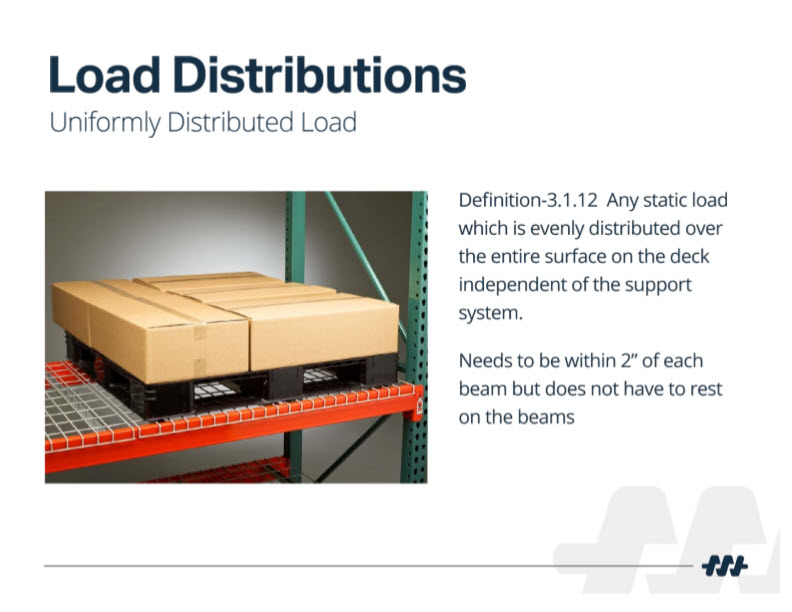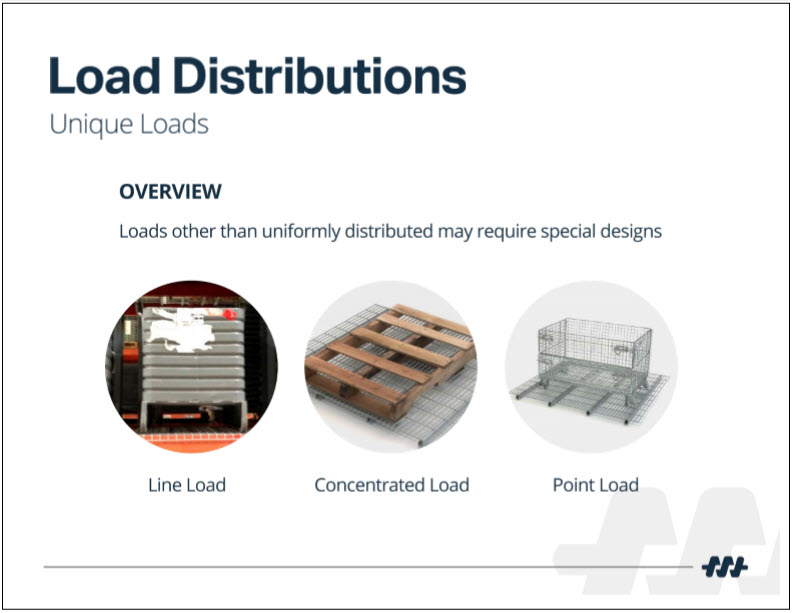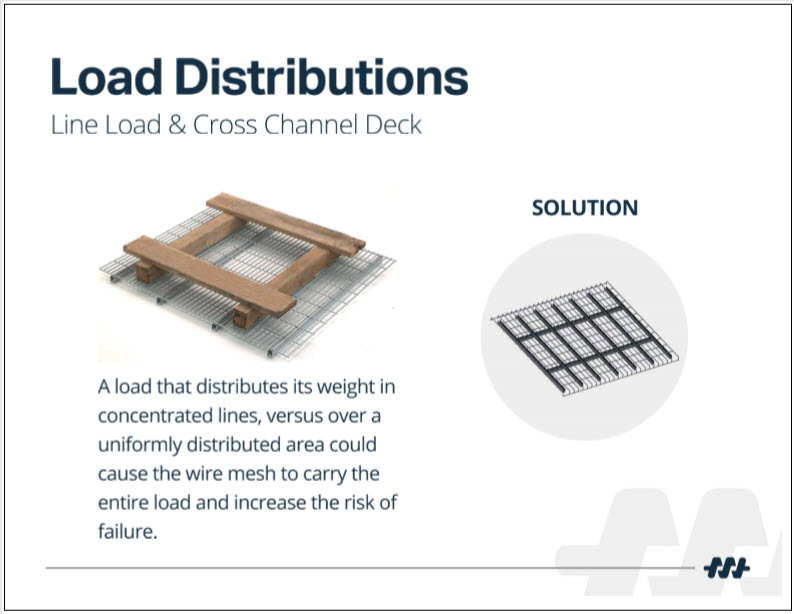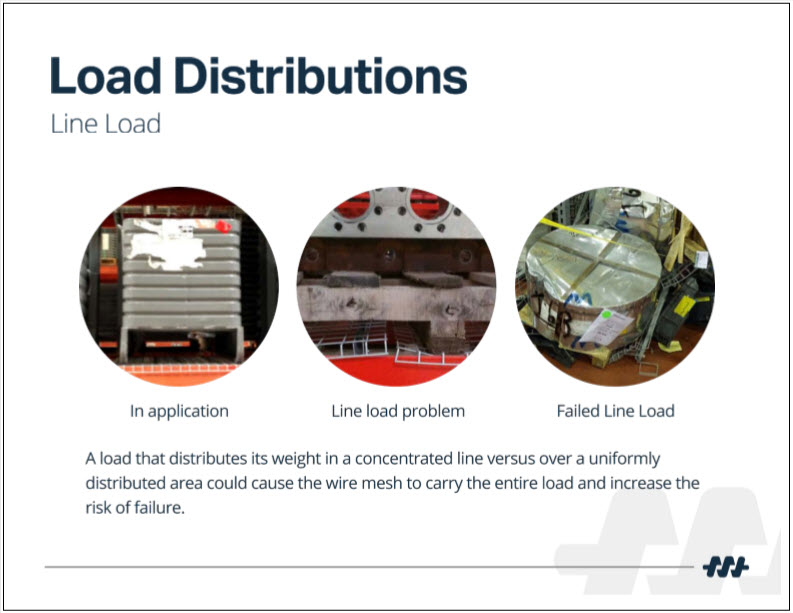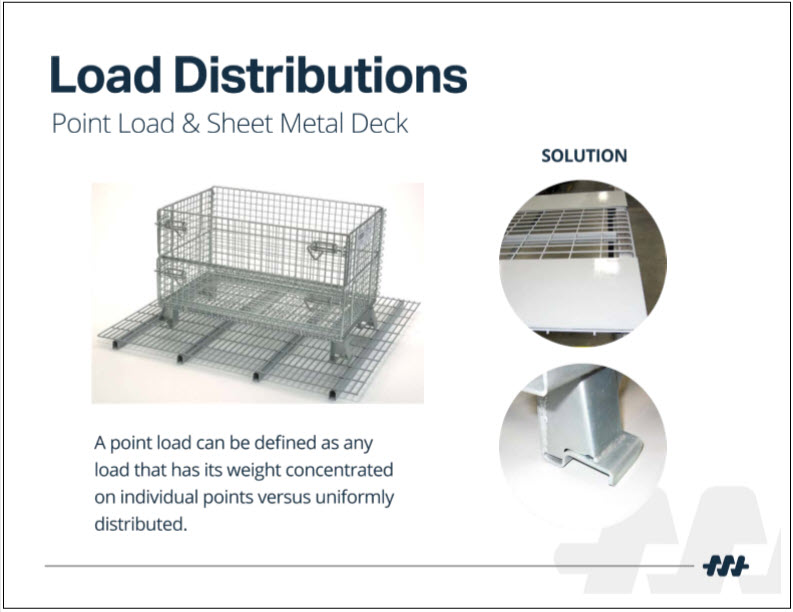Improper Loading of Inventory on Pallet Rack Decking
One of the most common problems found during pallet racking inspections and one of the leading causes of rack accidents is storing material on the pallet rack wire decking in a way that causes the wire decks to become overloaded. Most wired decks are not designed to be loaded with small pallets, containers with feet, crates, and skids. When these types of loads are placed on the wire decks, they become stressed and are at a risk of failure.
We will look at each of these four types of storage products to gain an understanding of why they create an unsafe overloaded condition.
Improper Loading of Small Pallets
Wire decks for pallet racks are designed to support Uniformly Distributed Loads (UDL). That means when material is loaded onto the wire deck the weight of the material should be spread out evenly over most of the surface of the wire deck. When wire decks are listed for sale you will always see the capacity is stated as UDL.
The uniform distribution of the weight is accomplished by the left to right bottom boards on the bottom of the pallet. When loaded onto the pallet rack the bottom boards of a properly sized and positioned pallet will be sitting on top of all the wire deck’s support channels that run front to back between the beams. If the pallet is not sitting on top of all the wire deck support channels, the load the wire deck can support will be greatly reduced. In addition, the pallet’s front and back left to right bottom boards must be sitting on the wire deck within two inches of both the front and back beams. When a smaller size pallet is placed on the rack the pallet may not sit on all the wire decks support channels or it may not sit within two inches of both the front and back beams. When this is the case, a Concentrated Loading condition exists for which the wire deck is not designed or rated.
Improper Loading of a Container with Feet
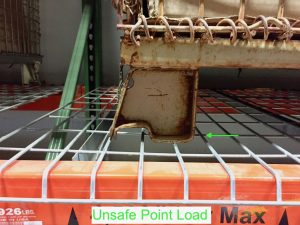
At no time can a container or pallet with feet be loaded onto a standard wire deck. The feet cause an unsafe highly concentrated load called a Point Load for which wire decks are not designed. A very overloaded condition can exist when the feet are not positioned over both the beams and the wire deck’s support channels that run front to back between the beams. The concentrated weight the feet place on the wire will cause the wire to fatigue and in time buckling will occur.
Improper Loading of a Skid or a Crate
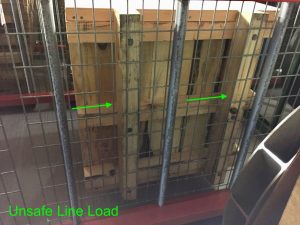
A skid is essentially a pallet that does not have any bottom boards. The body of the skid sits on the top of runners. Runners are the two or three boards that run from the front of the skid to the back. A crate has runners like a skid but it also has sides to create a fixed sized box to put material in. A skid or crate can be properly loaded on a wire deck as long as the runners always extend over top of and sit on both the front and back beams. Skids often are not as deep as the pallet rack shelf and therefore the runner falls short of one beam or both beams. This causes a Line Load. The concentrated weight the runner places on the wire will cause the wire to fatigue and in time buckle.
Why Do Wire Decks Not Fail More Often?
There are two primary reasons why wire decks do not immediately fail when one of the three conditions noted above exist. Often when a small pallet, container with feet, crate or skid are placed on a wire deck, the weight of the load is far below the rated capacity of the wire deck. However, the practice of creating Concentrated, Point, or Line Loads even when the material stored is far lighter than the capacity of the wire deck should never be allowed. The reason for this is someday the forklift driver will place a heavier load on the racks and because those style of pallets have “always” been stored there, they will think nothing of it and will unknowingly create a dangerous overloaded condition. At some point in the future as the wire fatigues a wire deck failure and collapse can happen.
Also, wire decks are designed with a safety factor and because of this they are often inadvertently mis-loaded without an immediate failure. However, overtime the steel becomes fatigued and given the right circumstances the wire deck will collapse; potentially causing harm to employees, material, and equipment. A bent wire deck indicates that mis-loading/overloading has taken place. The reason for the bending should be determine, a new loading protocol along with training should be implemented, and wire decks with more than minor bending should be replaced. If mis-loading has occurred, and wire decking fatigue/collapse is a concern, it is recommended to schedule a third-party pallet rack inspection service to throughly review your warehouse storage procedures.
Training your employees what an UDL, Concentrated Load, Line Load, and Point Load is and the types of loads that create them will mitigate most wire deck failures and improve pallet rack safety. Purchasing wire decks designed for Concentrated, Line, or Point Loads will allow your employees to properly and safely store crates, skids, and containers that because of their smaller size or design should not be store on standard wire decks. Below you will find pictures and additional explanations of these conditions that you may find useful to use when training your employees. Another safety tool to provide your employees is a racking inspection checklist – they can use it as a guide to conduct a quarterly pallet rack damage inspection.
